Reposted from Polar Bear Science
Posted on June 29, 2020 |
Here is a quick compare and contrast of sea ice habitat for polar bears in Canada and the Southern Beaufort region of eastern Alaska near the end of June, 2012-2020.

Similarities between Hudson Bay ice/open water in the sea ice charts below are striking. Ice cover at the end of June shown in these charts since 2012 reinforces the fact, documented in the peer-reviewed literature, that there has been no continued declining trend in dates of sea ice breakup for Western and Southern Hudson Bay since 1998 at least (Castro de la Guardia et al. 2017; Lunn et al. 2016). WH bears are still on the ice.
As a consequence, recent declarations of impending doom for Hudson Bay polar bears, based on claims of reduced population size and health of these subpopulations – which in any case are statistically insignificant for WH and SH (Obbard et al. 2018; Dyck et al. 2017) – must be due to some other cause (Crockford 2020).
In all areas, winds rather than melt due to increased temperatures drive much of the expansion of open water at this time of year.
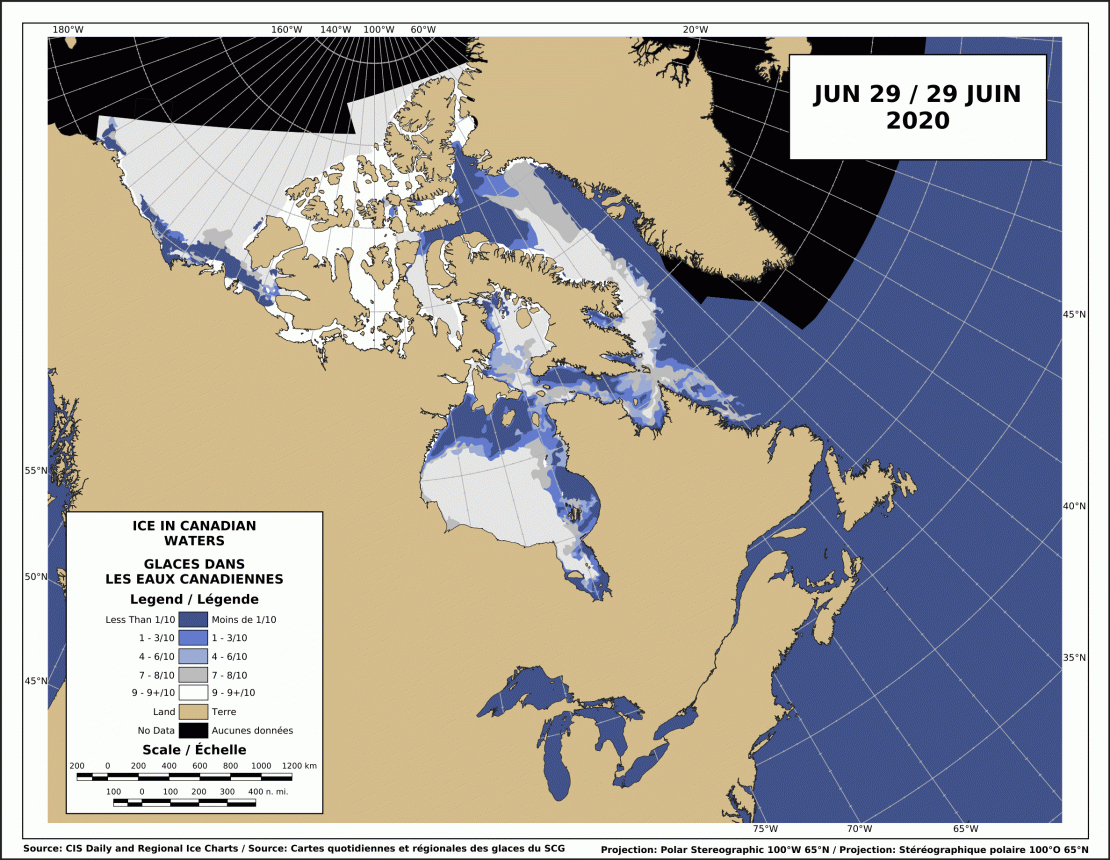
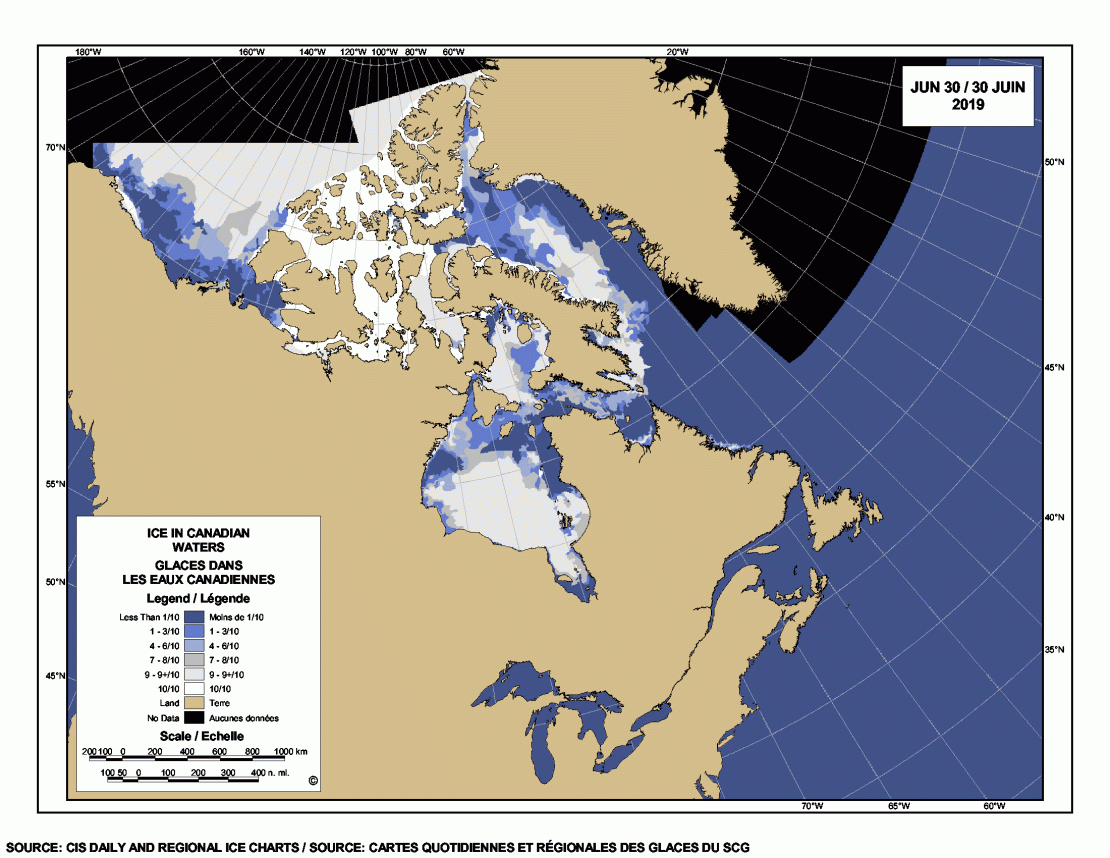
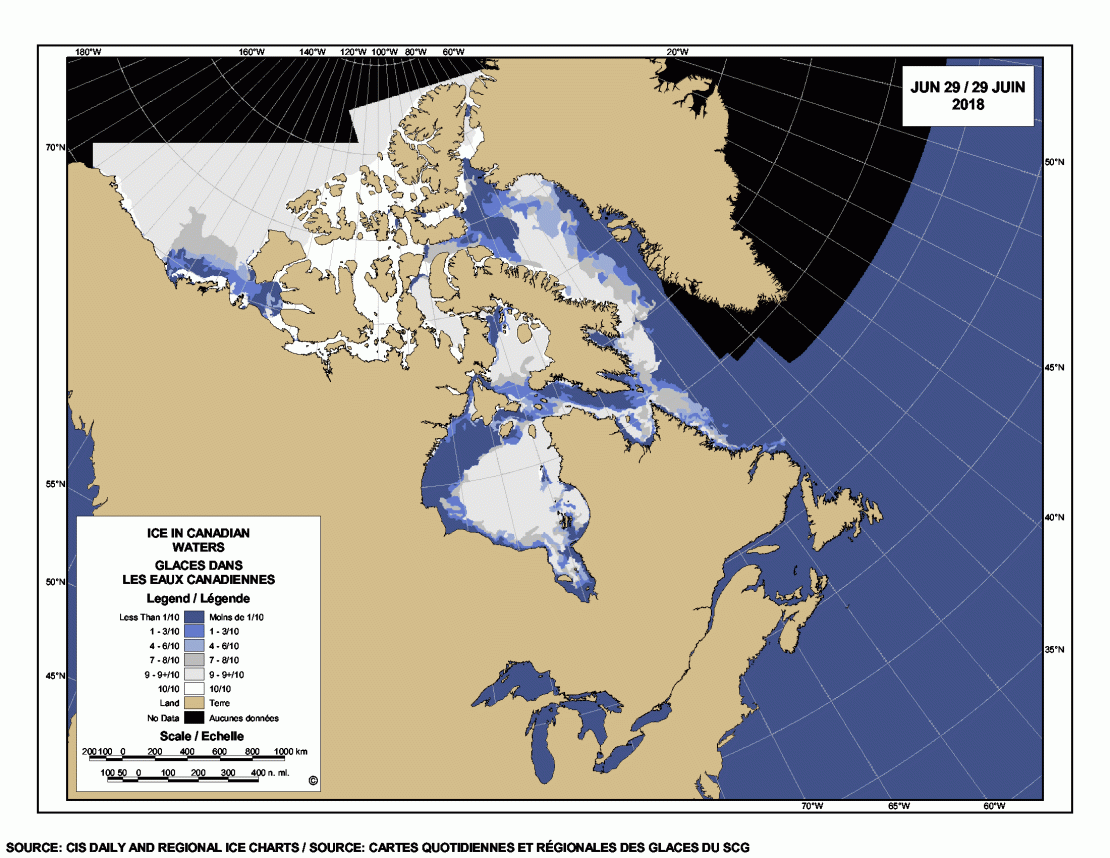

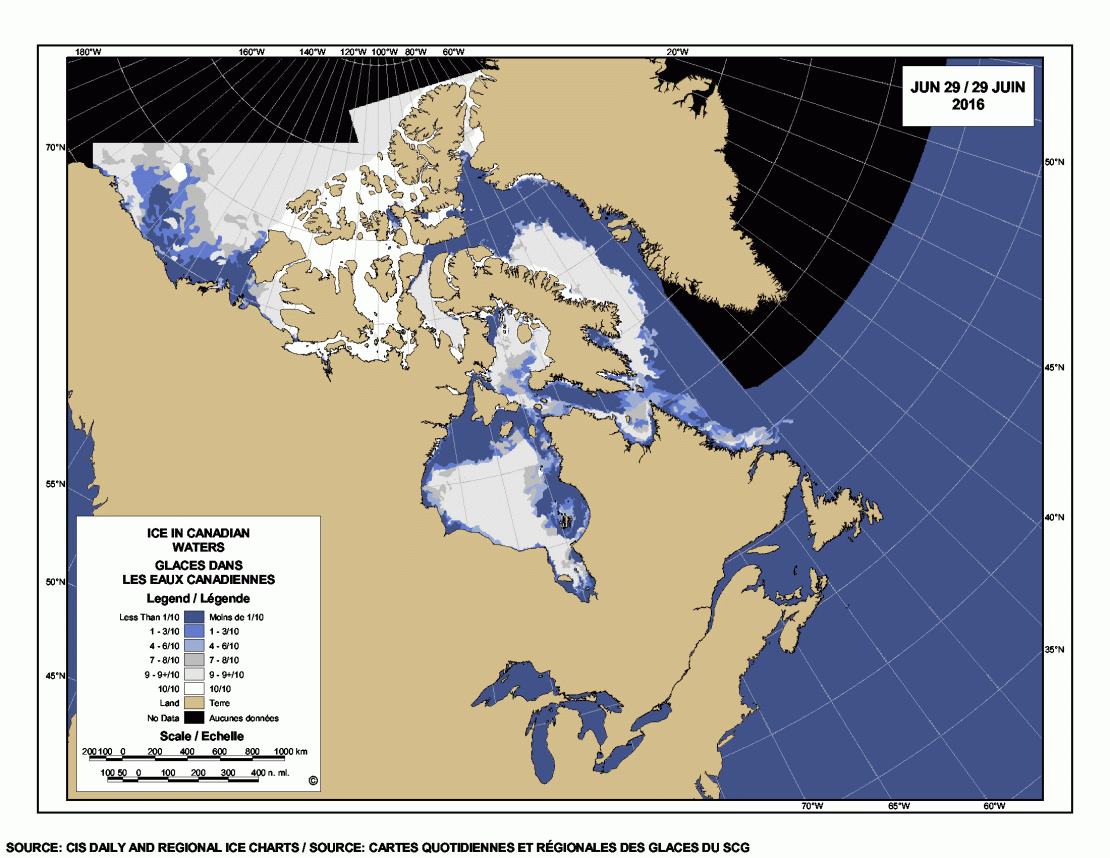
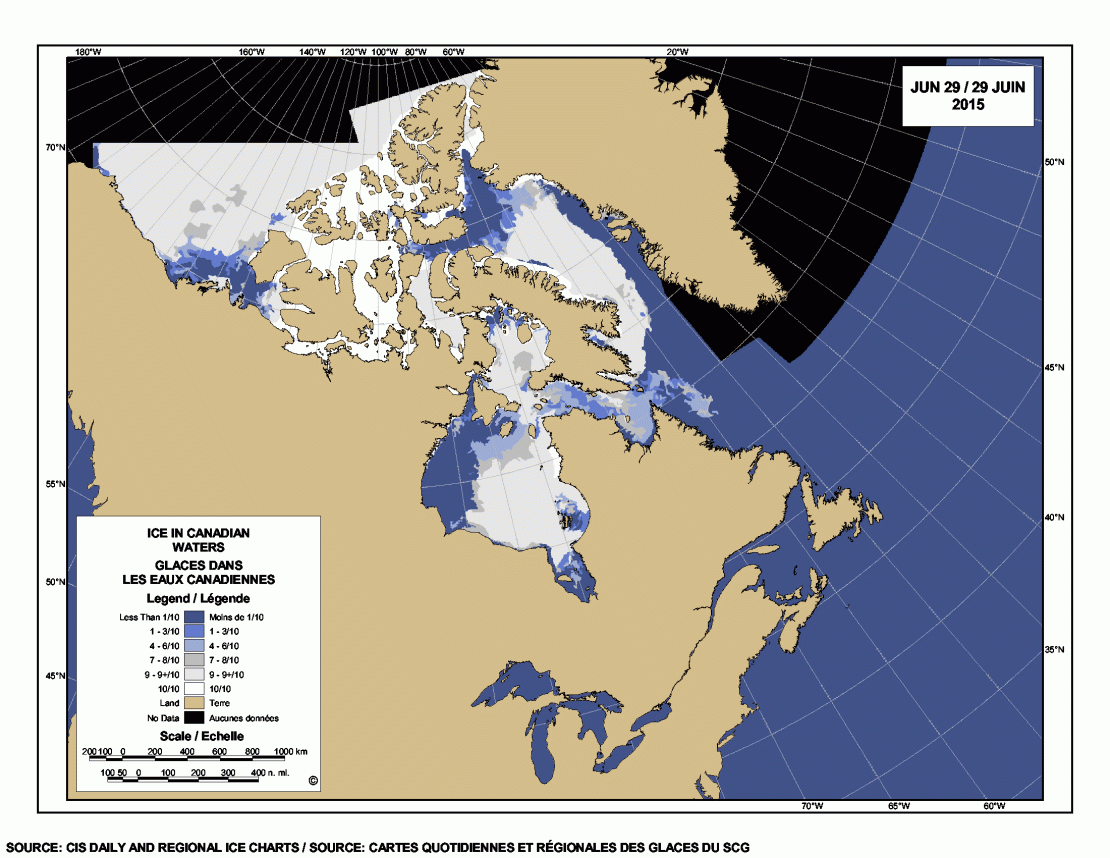

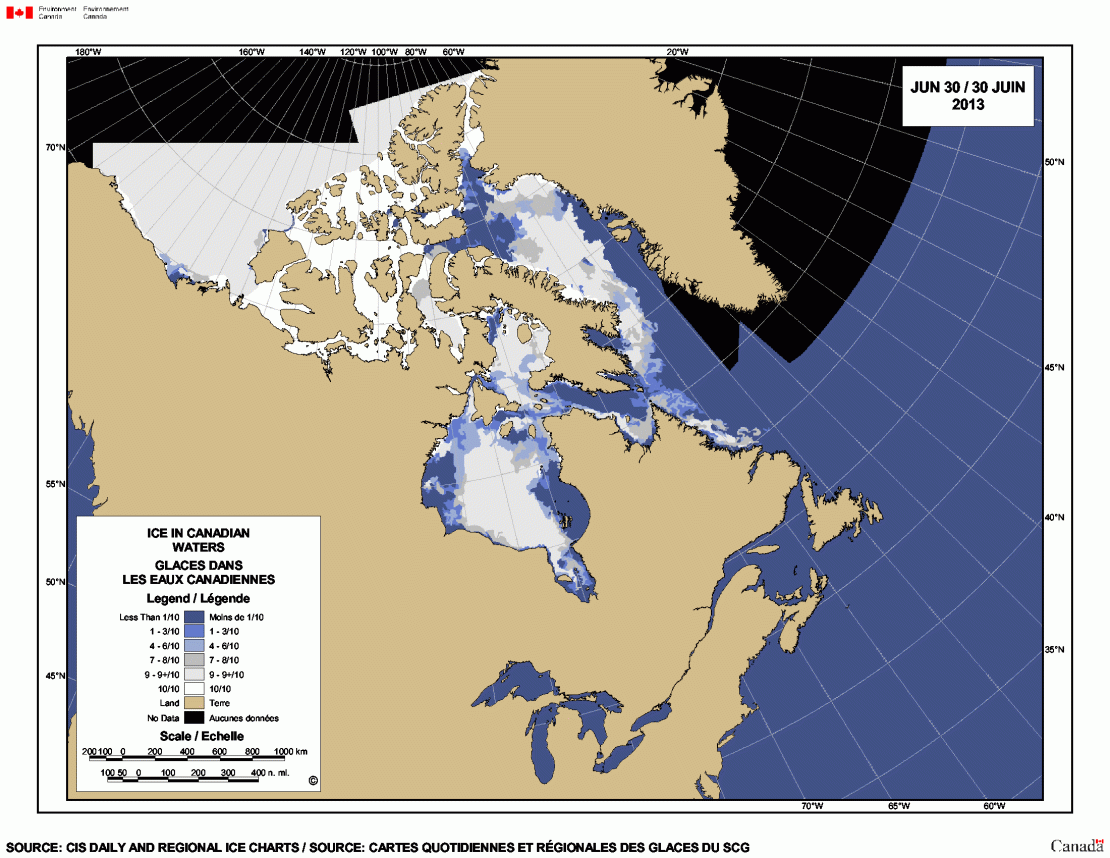
The only chart I have for 2012 (the year of the lowest-since-1979 summer ice minimum) is for 20 June (there is no official archive of these particular charts) :

So, for comparison I include below the 21 June chart for 2020:
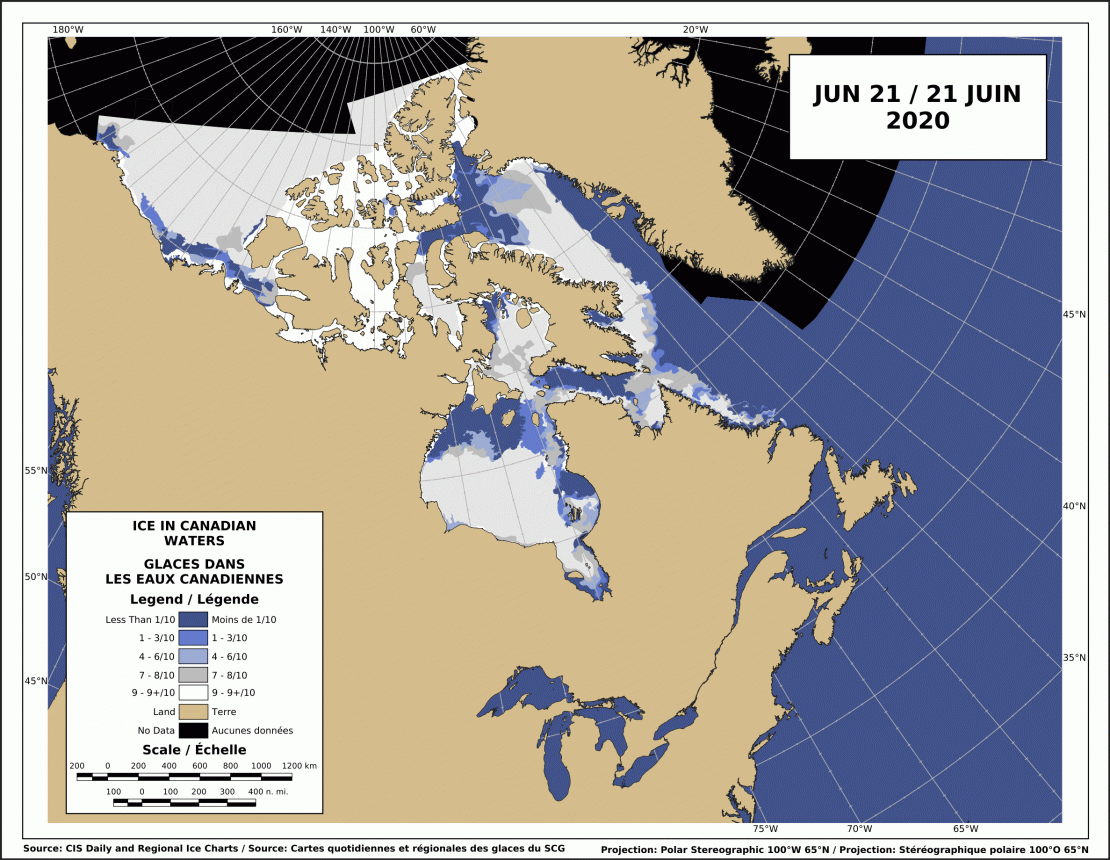
REFERENCES
Castro de la Guardia, L., Myers, P.G., Derocher, A.E., Lunn, N.J., Terwisscha van Scheltinga, A.D. 2017. Sea ice cycle in western Hudson Bay, Canada, from a polar bear perspective. Marine Ecology Progress Series 564: 225–233. http://www.int-res.com/abstracts/meps/v564/p225-233/
Crockford, S.J. 2020. State of the Polar Bear Report 2019. Global Warming Policy Foundation Report 39, London. pdf here.
Dyck, M., Campbell, M., Lee, D., Boulanger, J. and Hedman, D. 2017. Aerial survey of the Western Hudson Bay polar bear sub-population 2016, final report (26 June 2017). Status report 2017-xx, Nunavut Department of Environment, Wildlife Research Section. Igloolik, Nunavut. pdf here.
Lunn, N.J., Servanty, S., Regehr, E.V., Converse, S.J., Richardson, E. and Stirling, I. 2016. Demography of an apex predator at the edge of its range – impacts of changing sea ice on polar bears in Hudson Bay. Ecological Applications 26(5): 1302-1320. DOI: 10.1890/15-1256
Obbard, M.E., Stapleton, S., Szor, G., Middel, K.R., Jutras, C. and Dyck, M. 2018. Estimating the abundance of the Southern Hudson Bay polar bear subpopulation with aerial surveys. Arctic Science https://doi.org/10.1139/AS-2018-0004
White bears are highly privileged, protected, getting lazy and fat.
What about brown bears? Their lives matter too.
WWF: ” Human expansion into the bears’ natural habitat, as well as instances where brown bears are considered nuisances, demonstrate the tension that exists between bears and people. Logging, mining, road construction, and other development—coupled with human attempts to prevent brown bears’ interference with things like livestock, crops, water supplies, and garbage bins—all impact this animal population.”
Brown bears in Italy causes problems too
https://www.bbc.com/news/world-europe-53176222
Kodiak Bears, i.e. the ‘other’ Brown Bear sub-species are larger than Polar bears.
American Black Bears weigh between 45kg to 272kg, (100 to 600 pounds). Though wild black bears up 410kg (900 pounds) have been recorded.
Besides size and inbreeding, Europeans tend to eliminate European brown bears displaying unfriendly uncooperative attitudes.
Funny, Vuk. Of course, the marxist-wordsmithers usually get their labels 180 deg wrong — from elementary-school science, white is actually all-colors, so “of color” is actually white, and those “of color” are actually of less color.
Ah yes, the white ursusarchy. The sooner they are replaced by brown bears, the better off we will all be (except, of course, the white bears).
Polar Bears, Brown Bears, too? Bears Lives Matter? That’s sacrilegious. Some, select, Black Bears Lives Matter, maybe, when politically congruent, and the political consensus is in alignment.
Black bears in Canada are positively effected by availability of garbage dumps. If you want to see black bears near towns you will be directed to their gsrbage dump.
https://globalnews.ca/news/3777381/bear-kicks-its-feet-up-in-northern-manitoba-garbage-dump/
Polar Bears the same, and here in PA/eastern US black bears loves them some garbage, too. In the weeks leading up to bear season locally we always talk with the garbage truck drivers, THEY know where the bears are regularly seen, they have to clean it up.
Polar bears have black skin
(I know you were joking)
The charts show that obviously by 2030 the artic will be ice free and we will all be dead. (Is sarc really necessary?)
Its worse than we thought?
Meanwhile how many middle school kids have been hopelessly brainwashed by Algore images like this?
Where are the retractions? Too late. Damage to young skulls of mush already done.
If you don’t include the sarcasm note, you sound exactly like the hosts of trolls and trollops that believe climate alarmist predictions.
Again, it appears that Dr. Susan starts with data and progresses toward an interpretation, instead of clinging to a theme and sorting through (mis)information until you find something that might support your belief. Sort of a sciencey kind of deal.
For the polar bears to hrive, seals have to die.
Seals lives matter.
No comment yet from Loydo or Griff?
They’re waiting for today’s talking points memo.
Haven’t heard from griff in a while now. As for loydo, probably waiting for his handler to tell him what to say.
He said he would leave WUWT and never return, several times. And several times he returns. He’s back in the The progress of the COVID-19 epidemic in Sweden: an analysis thread. I am sure he’ll post in the Polar bear habitat in Canada and eastern Alaska compared at end of June 2012-2020 thread stating how S. Crockford is wrong and he is right because he read something in The Guardian.
“there is no official archive of these particular charts”
True, but they do seem to archive other types of charts here:
https://iceweb1.cis.ec.gc.ca/Archive/page1.xhtml?lang=en
…but I find that they’re not as easy to look at.
So, it appears the polar bears are rolling in the high clover, to steal a phrase.
You can go to any particular day at https://nsidc.org/arcticseaicenews/charctic-interactive-sea-ice-graph/ and when you click on the day (on the year line) it should open an image of that day’s sea ice extent. At least for most days it does, going back to 1979.
Yea, their image shows Arctic covered with ice, still, again.
The world is hurtling toward impending doom, because of the incontrovertible, indisputable evidence in a place where no people ever go – the arctic.
We’re all gonna die in a fiery flood!! Cats&dogs living together, mass hysteria,,,,,oh, yea, we are there, never mind.